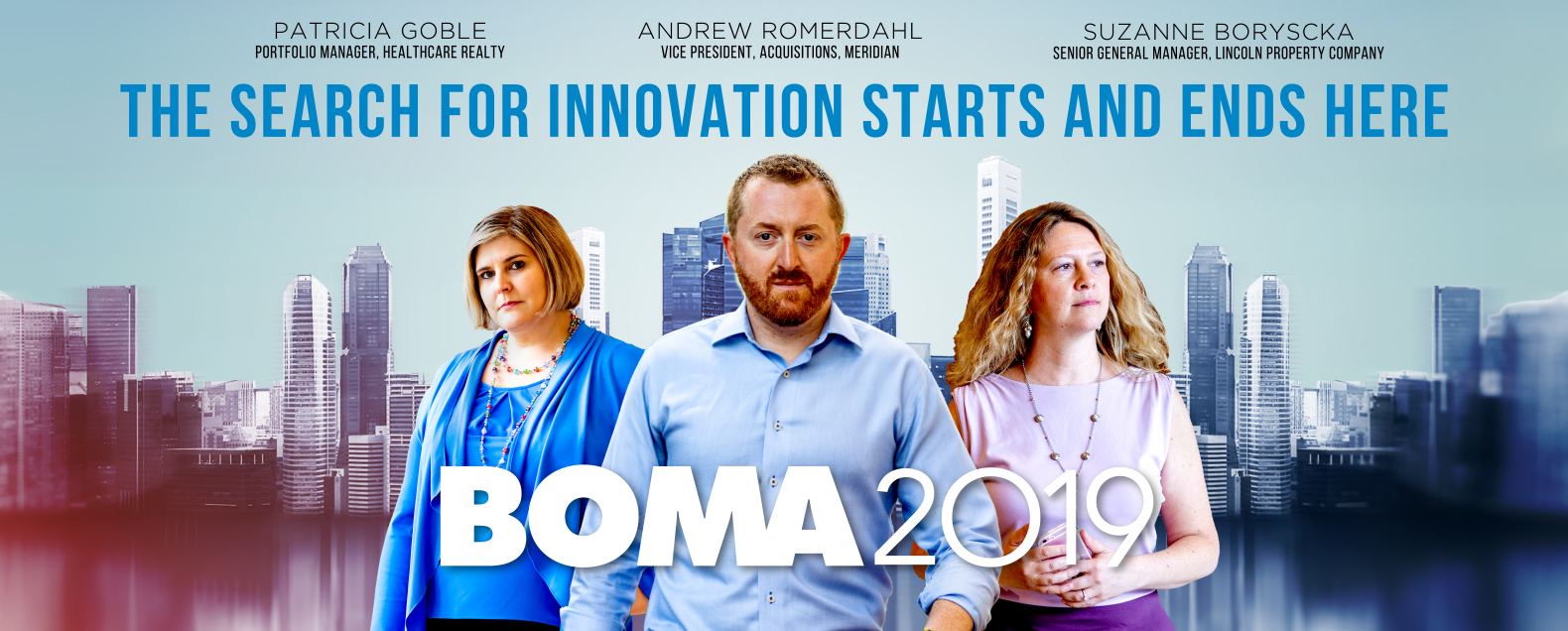
The annual BOMA International MOB and Healthcare Real Estate conference is one of the largest conferences we attend every year. This year we sent five team members to Minneapolis, MN and tried our best to divide and conquer so we could soak up as much information as possible. There were a ton of extremely compelling panel conversations, so let’s dive right in!
Capital Markets Track – Interesting and Notable Transactions
The panel covered several projects, and in each case, there were two panelists that had been involved in each of the transactions, helping to provide a well-rounded prospective. We discussed the following projects:
- The CNL Portfolio: A $1.25 billion portfolio consisting of 63 properties that includes 55 medical office buildings and 8 higher acuity buildings.
- Pappas Properties Atrium Health Midtown Development: A 280,000 SF mixed use project that includes two Class A medical office buildings.
- Memorial Hermann Medical Plaza: A 510,000 SF building that closed for $400 million in July 2018 representing the largest single asset transaction ever.
In summary, there is a perceived cap rate pop for aggregating a portfolio of assets, and that is allowing buyers to underwrite and pay more for a single asset when they look at their portfolio holistically. Once you assemble a critical mass of square footage or buildings, there are operational efficiencies in Asset Management and Property Management that give an operator additional fee/income that further warrant paying higher prices. There is no shortage of institutional capital and overseas money flooding into the healthcare space. Healthcare is still viewed as somewhat recession proof, so pension funds and private investors want some of this in their portfolios. With the shortage of new product out there, look for aggressive buyers to push underwriting assumptions and bet on future rent growth despite flat/shrinking reimbursements.
Behavioral Health – Identifying Strategic Investments
Growing demand for healthcare services plus favorable government legislation is making behavioral health more desirable to investors. There is a concern that rural markets are not being served adequately for behavioral health treatment. Providers are looking to telemedicine to serve the rural populations which will allow patients in these communities to see the specialist that they would not traditionally have access to. A large issue facing the treatment of behavioral health today is that many of the treatment lines lose money because they are primarily serving the uninsured. Many of the mission driven providers are carrying the burden of those programs because the for-profit or non-mission driven providers are not willing to provide those services and take losses. FQHC’s have a better reimbursement model and are starting to partner with larger systems to provide care. Desirability for healthcare assets is closely tied to the business model; therefore, payor mix and care delivery models factor in heavily during investment decisions.
The Impact of Medical Research and Innovation on the Future of Healthcare
This panel spoke of the importance of university-based health and the research that is done at those facilities. It is often harder for university-based health systems to compete because they are not compensated for the expensive research and can only charge the same amount as competing systems. Panelist cited medical care at home and telemedicine as areas that are poised to grow the most in the coming years. Reimbursements for these services have still not been figured out and are the biggest hurdle for growth. The importance of throughput analysis and the necessity for providers to be more efficient and cost conscience are being more widely adopted by providers and are necessary in today’s shrinking reimbursement environment.
Keeping up with the Joneses – Maintaining and Managing Your Asset Base
This panel discussed the challenges of systems (both large and small) dealing with decisions around capital expenditure both for R/M as well as for expansion/new development. It was interesting to compare the challenges between a single system, to a small-mid size multi-regional system, and to a more robust structure. For the small hospital, their largest challenge was around finding small sites that they would prefer to own (most of the time) as they are developing outpatient sites that they want to keep for a longer period. Some of this also related to their defensive strategy trying to maintain market share with relatively larger systems trying to enter the market. The mid-size system’s challenges were more typical and related to the buy vs. lease and fix existing vs. expand/develop that are common among multi hospital/region systems. Looking at larger systems, one panelist spoke about the trend of getting out of the “own everything” mentality and looking at leveraging outside capital on existing real estate in order to unlock expansion potential.
Although each market segment has challenges around finite capital allocation, the viewpoint and the specific challenges of each were distinct. In talking to the smaller hospital system operators, the issues are mostly market/provider specific. From a development standpoint, this would point to the importance of knowing the intricacies of a market/user that you are trying to transact in.
Asset Management Track – Is Your Lease Structured Correctly?
The panel talked in depth about how to mitigate risk within your lease through specific provisions. They hit home the fact that you must ensure that specific business points are well defined to make certain that there are no gray areas. They also covered regulatory requirements for structuring lease arrangements, specifically the Physician Self-Referral Act (Stark), the Anti-Kickback Statue and the False Claims Act.
As you can see, this conference had a little bit for everyone and did not fail to provide information that will help us continue to grow as industry professionals.
If you’re interested in learning more about BOMA International, visit https://www.boma.org/.
Authors: John Pollock, Mike Conn, R.J. Sommerdyke, Andrew Romerdahl and Heidi Duffy